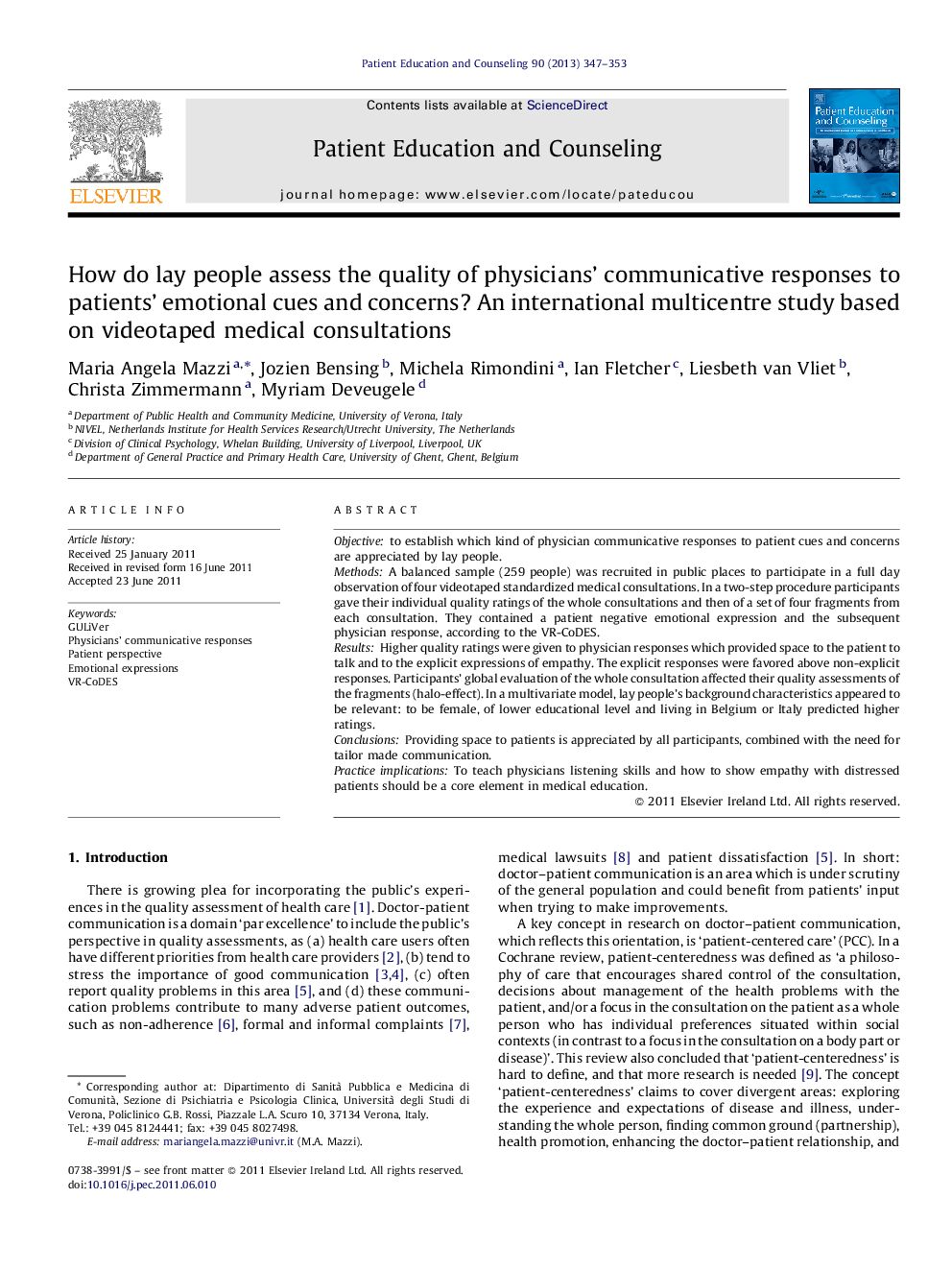| Article ID | Journal | Published Year | Pages | File Type |
|---|---|---|---|---|
| 3813505 | Patient Education and Counseling | 2013 | 7 Pages |
Objectiveto establish which kind of physician communicative responses to patient cues and concerns are appreciated by lay people.MethodsA balanced sample (259 people) was recruited in public places to participate in a full day observation of four videotaped standardized medical consultations. In a two-step procedure participants gave their individual quality ratings of the whole consultations and then of a set of four fragments from each consultation. They contained a patient negative emotional expression and the subsequent physician response, according to the VR-CoDES.ResultsHigher quality ratings were given to physician responses which provided space to the patient to talk and to the explicit expressions of empathy. The explicit responses were favored above non-explicit responses. Participants’ global evaluation of the whole consultation affected their quality assessments of the fragments (halo-effect). In a multivariate model, lay people's background characteristics appeared to be relevant: to be female, of lower educational level and living in Belgium or Italy predicted higher ratings.ConclusionsProviding space to patients is appreciated by all participants, combined with the need for tailor made communication.Practice implicationsTo teach physicians listening skills and how to show empathy with distressed patients should be a core element in medical education.
